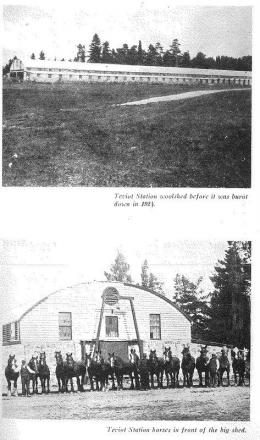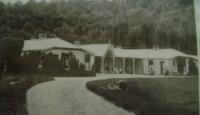Teviot Woolshed
The Teviot Woolshed was built in 1865 and destroyed by fire in 1924. It is on the corner of Loop Road and Smith Road and it's remains now sit in a large paddock. It was the biggest woolshed in the southern hemisphere. It was believed to be measured at 137 metres long, 47.3 metres wide and could possibly hold up to 8,000 sheep.
The original homestead
It was built between 1857-61. From what I've researched there wasn't much plumbing in the actual building and the children that lived in there received education from private teachers that lived in the homestead. (But information sources show that the children were more interested in the station, than what kids that lived in the township would be learning. The homestead had approximately 30 rooms and housed many people. The homestead was around half a km away from the woolshed.
The Teviot Woolshed was built after John Cargill applied for the lease of 64 000 acres of grazing land in 1857. John went into partnership with a wealthy gentleman named E.R Anderson who put £100 000 into the business and they then built a few buildings on the land, for instance a very large house and the woolshed. It took several years for the building project to be completed as it took a while for the roof to be shipped to New Zealand from London, England. The roof of the woolshed was made from an old railway station.
On the 11 November 1924 the building was seriously damaged in a fire believed to be an arson attack. After 1924 the building was no longer able to be used at all. Although the mystery of the supposed arson has never been solved the local grapevine had many theories ranging from disgruntled nearby farmers, to a cover up for the crime of poaching and sheep wool stealing. There was even the suggestion that the fire may have accidentally been started by a cigarette.
In 1982 when the then owners the Lunn family came home from an outing they were horrified to find a party of children from the Roxburgh Health Camp on an outing. They were climbing all over the ruins. Just thinking about those children getting crushed and the possible serious consequences of such a tragedy led to John hiring a contractor to flatten the dangerous sandstone ( half of the ruins) and push the rubble into the gully at Rugby Creek.
It is now used as a tourist attraction and there has been recent talk about building a cycle trail from Roxburgh to Millers Flat passing by the Teviot Woolshed and drawing even more tourists to our area.
.
By Deanna and Rory.








